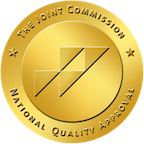Skip To Rehab Listing
However, for those struggling with alcohol and drug addiction problems, Evans Mills can also offer workable solutions in the form of 25 addiction treatment facilities designed to support clients in their treatment.
Drug and Alcohol Treatment Methods and Settings
Evans Mills area residents who struggle with addiction have many recovery settings available to them, including the following: long term rehabs, inpatient drug and alcohol rehabs, short term rehab facilities, outpatient day treatment, detox programs.
These treatment programs make drug and alcohol rehab easy to access, with convenient locations and several varying treatment approaches from which to choose, including these listed here: anger management, group therapy, trauma-related counseling, substance abuse counseling approach, rational emotive behavioral therapy, brief intervention approach.
Special Programs for Alcohol and Drug Recovery
Drug and alcohol addiction affects every individual differently. In order to address these differences and provide more customized treatment, addiction treatment programs in Evans Mills offer a number of special programs for [patients such as: clients referred from the court/judicial system, persons with eating disorders, active duty military, persons with post-traumatic stress disorder, veterans, aftercare/continuing care.
Patients who believe they may benefit from these special programs can explore them with the treatment center to get support that is designed to maximize the likelihood of sustained recovery.
Treatment Payment Options
Residents of Evans Mills come from varied economic circumstances, making it vital for treatment centers to deliver various payment options that place rehabilitation within financial reach. Clients can expect to get payment options at close by substance abuse treatment facilities such as the following: private medical insurance, private pay, sliding fee scale, medicaid, medicare, county or local government funds, other state funds.
Regardless of a client's financial situation, finances should not be a barrier to rehab. Alcohol and drug rehab facilities guide people through their financing options and help them pinpoint a way to afford their rehab.
The desired outcome of varied rehab programs, methods, programs, and financing options is that treatment for addiction is accessible for as many people who really need it.
Commonly Asked Questions about Addiction and Treatment
What happens when a person overdosed on fentanyl?
Fentanyl is a synthetic opioid that is 50 to 100 times more potent than morphine. It is used medically to treat severe pain, but its potent nature also makes it dangerous when misused or taken in excessive amounts. When a person overdoses on fentanyl, several life-threatening symptoms and complications can occur:
- Respiratory depression: One of the most critical effects of a fentanyl overdose is severe respiratory depression, which occurs when the drug suppresses the brain's ability to control breathing. This can lead to slow, shallow, or irregular breathing, or even cause the person to stop breathing altogether, which can be fatal.
- Unconsciousness: A fentanyl overdose can cause the person to lose consciousness or become unresponsive. In this state, the individual is at a higher risk of choking or suffering from positional asphyxia if they are in an awkward position that restricts their breathing.
- Constricted pupils: An overdose may result in pinpoint pupils, also known as miosis, which is a common sign of opioid intoxication.
- Cyanosis: Due to the lack of oxygen resulting from respiratory depression, the person's skin, lips, and nails may develop a bluish tint, which is called cyanosis.
- Low blood pressure: A fentanyl overdose can lead to a significant drop in blood pressure (hypotension), which may result in dizziness, fainting, or shock.
- Slow or weak pulse: The person's heart rate may become slow or weak, further contributing to the risk of life-threatening complications.
- Muscle rigidity: In some cases, a fentanyl overdose can cause muscle stiffness or rigidity, particularly in the chest and abdominal muscles, which can make it even more difficult to breathe.
- Seizures: Although less common, a fentanyl overdose may also cause seizures in some individuals.
- Coma or death: In severe cases, a fentanyl overdose can lead to coma or death due to respiratory failure, lack of oxygen, or other complications.
If you suspect someone is experiencing a fentanyl overdose, it is crucial to call emergency medical services immediately. Administering naloxone, an opioid antagonist, can temporarily reverse the effects of the overdose, but multiple doses may be needed due to fentanyl's potency. It is essential to note that naloxone is not a substitute for professional medical care, and the person must still receive prompt medical attention to address any underlying complications and ensure proper treatment.
What medications are used for the treatment of addiction?
Several medications have been approved by the U.S. Food and Drug Administration (FDA) for the treatment of addiction to alcohol and certain types of drugs. The specific medication used can depend on the substance the person is addicted to, their overall health, and other individual factors. Here are a few examples:
For Alcohol Addiction:
- Disulfiram (Antabuse): This medication causes unpleasant effects such as nausea and flushing of the skin if a person drinks alcohol. The aim is to discourage them from drinking.
- Naltrexone (Revia, Vivitrol): Naltrexone blocks the euphoric and sedative effects of alcohol, helping to reduce cravings.
- Acamprosate (Campral): Acamprosate works by restoring the balance of certain chemicals in the brain that may become disrupted due to alcohol addiction. It can help people maintain abstinence from alcohol after they quit drinking.
For Opioid Addiction:
- Methadone: This is a long-acting opioid agonist that can prevent withdrawal symptoms and reduce cravings for opioids. It is dispensed through specialized opioid treatment programs.
- Buprenorphine (Subutex, Suboxone): Buprenorphine is a partial opioid agonist that can help manage cravings and withdrawal symptoms. Suboxone also contains naloxone to prevent misuse.
- Naltrexone (Revia, Vivitrol): Like its use in alcohol addiction treatment, naltrexone can block the euphoric effects of opioids.
For Nicotine Addiction:
- Nicotine Replacement Therapies (NRTs): These come in various forms like gums, patches, lozenges, nasal sprays, and inhalers, and can help manage withdrawal symptoms and cravings when quitting smoking.
- Bupropion (Zyban): Initially developed as an antidepressant, bupropion can also help reduce cravings and the symptoms of nicotine withdrawal.
- Varenicline (Chantix): Varenicline helps reduce cravings for nicotine and decrease the pleasurable effects of cigarettes and other tobacco products.
Can alcohol withdrawal be fatal?
Yes, alcohol withdrawal can be fatal in severe cases, which is why it should always be managed under the supervision of healthcare professionals. This is especially true for individuals who have been drinking heavily for a long period of time or who have a history of severe withdrawal symptoms.
The most serious form of alcohol withdrawal is called delirium tremens (DTs), which occurs in approximately 5% of patients undergoing withdrawal. It typically starts 48 to 72 hours after the last drink, and symptoms can include severe confusion, hallucinations, high blood pressure, fever, heavy sweating, and rapid heartbeat. In addition to these, seizures can occur, which add to the risk.
Delirium tremens is a medical emergency and can be life-threatening if not treated promptly. Mortality rates without treatment are estimated to be as high as 35%, but with appropriate treatment, this rate drops to 5-15%.
Even less severe cases of alcohol withdrawal can be dangerous because they can lead to dehydration, severe vomiting, or other complications. Furthermore, withdrawal symptoms can make it difficult for an individual to maintain abstinence from alcohol, increasing the risk of a potentially dangerous relapse.













